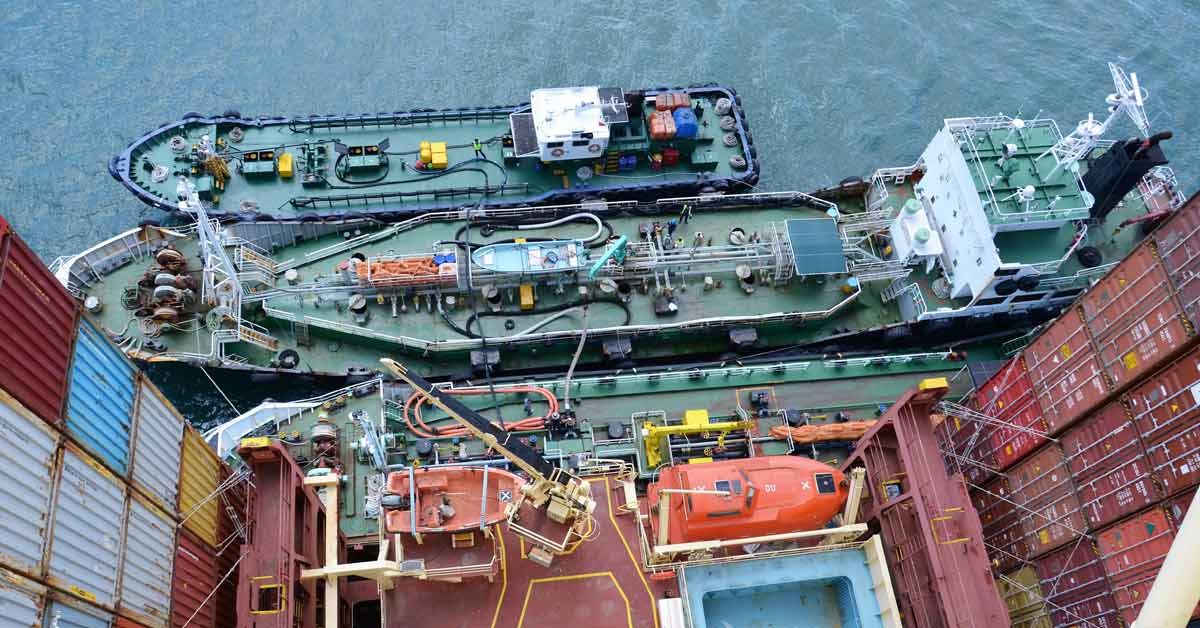2 min read
Bio-Bunkering Gaining Traction as Calls for Decarbonization Grow
ResourceWise
:
Feb 1, 2024 12:00:00 AM

Some breaking news from the maritime fuels market. ResourceWise is tracking a noteworthy rise in bio-bunkering sites. This change highlights some positive motion in an industry which has seen many challenges transitioning into renewables.
Maritime Shipping Industry’s Slow Transition to Renewables
Maritime shipping serves as the lifeline for global economics with close to 90% of all world commerce relying on it. But with this industry comes a rising amount of CO2 emissions.
Industry regulations first put in place back in 2018 focused on leading shipping vessels’ transition to renewable fuels. It should come as no surprise that with the trending focus on this objective, we’re seeing renewed attention on bio-bunkering.
Bio-bunkering has come into the spotlight as the technology for capable renewable fuels has become more available.
Even just a few years ago, the scope and interest in bio-bunkering was quite limited. Only a few ports were utilizing new fuels—usually on a test or pilot basis.
In fact, bunker suppliers didn’t see much interest in transitioning shipping fuels to low-carbon alternatives. For one, the fuel requires enough energy to accommodate the demands of these vessels. This made the production of acceptable fuel difficult.
More importantly, however, was the cost. Prices for blended bio-bunkering were simply too high to make any sort of widespread adoption economical. Interest remained low as most shipping companies were already struggling with higher costs in other areas.
Market Changes Renew Interest in Adopting Alternative Fuels
Increases in production facilities and process improvements have helped to lower bio-bunkering costs as well. These factors have all come together to create a much more approachable renewable fuel landscape for the shipping industry.
Today, the bunkering market has already changed substantially. There is a clear and direct increase in the discretionary demand for freight fuel solutions utilizing low carbon alternatives. Similarly, regulations such as the Fuel-EU Maritime Agreement are quickly taking shape.
Related: EU Shipping Fuel Transition in Motion with Fuel-EU Maritime Agreement
The agreement begins in 2025 with a 2% reduction requirement in emissions from a 2020 baseline. That means businesses have less than a year to develop plans with real reductions in CO2 using bio-blended bunker fuel.
We’re seeing a serious uptick in bio-blended bunker fuel transactions in several global locations. Furthermore, several new ports have entered the marketplace to offer renewable fuel solutions. With aggressive moves to acquire ISCC certification, they are positioning themselves for competitive positions in both the short- and long-term future.
How Cargo Owners Shift the Industry
As businesses of all types work toward reducing scope 3 emissions, they must assess their carbon footprint across all areas of operations. Unsurprisingly, their perspective inevitably turns to shipping.
Shipping through traditional means embeds a significant amount of carbon to the product lifecycle. Lowering emissions in this area can help accomplish several aims:
- Meeting emissions standards, such as those from the Science Based Targets initiative.
- Complying with current or upcoming regulations
- Aligning operations with investor requirements
In all these cases, cargo owners are looking much more closely at freight operators and suppliers to accommodate the growing demand to decarbonize.
As calls for decarbonization grow louder, we’ll see continued pressure across the global supply chain. In turn, this will likely amplify the discretionary demand for bio-bunkering to continue expanding to further countries and ports.
Learn More with ResourceWise’s Premium Bio-Bunkering Green Diesel Report
With all the emerging changes in the bio-bunkering landscape, understanding the role of freight in your value chain is essential.
With ResourceWise’s Green Diesel Report, “Biofuel Bunkering Gathers Pace,” you can get the latest insights on maritime transport biofuel trends and the growing number of available bio-bunkering hubs.
The free-to-download article includes all the following:
- Latest insights on the current state of the bio-bunkering fuel industry
- Detailed analysis on discretionary targets and other factors driving an increase in biofuel demand
- A look at the locations where new bio-bunkering hubs are appearing
- ResourceWise’s predictions and expectations for the future
This report is usually only available through a subscription to our online biofuel and feedstock analytics platform, Prima CarbonZero. Download your copy now to get premium insights delivered right to your inbox.






